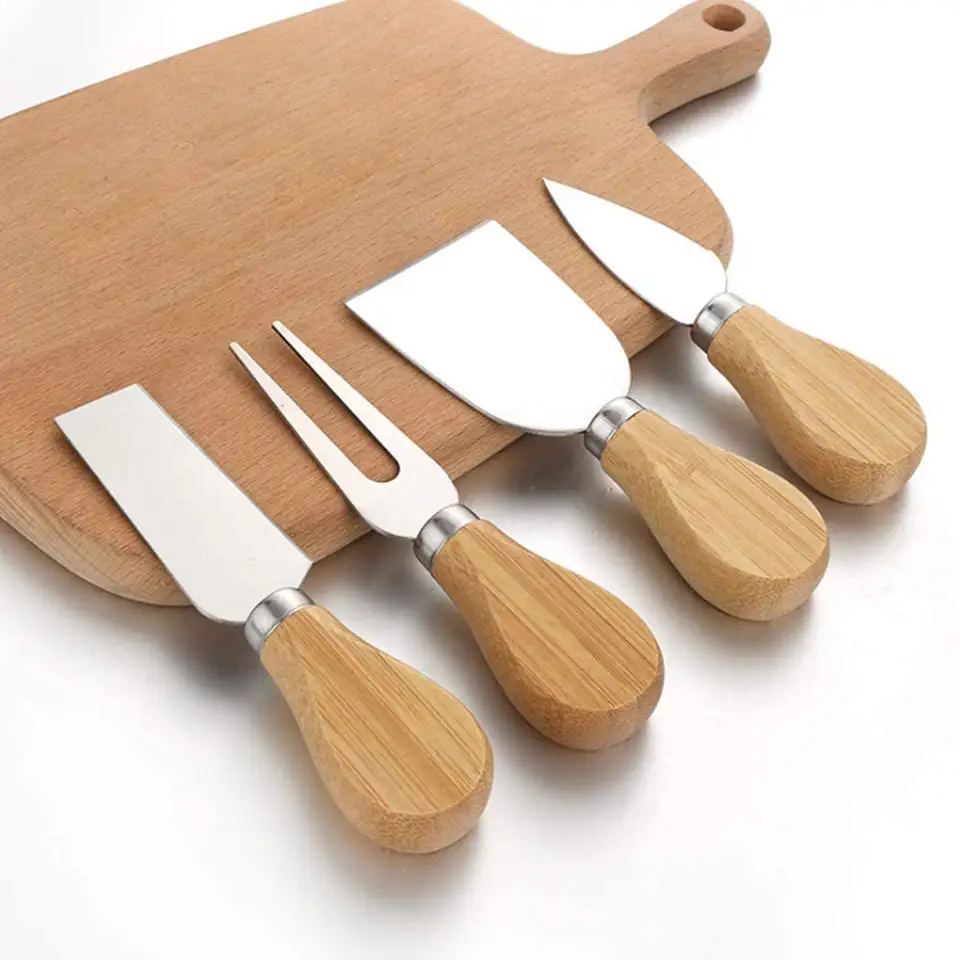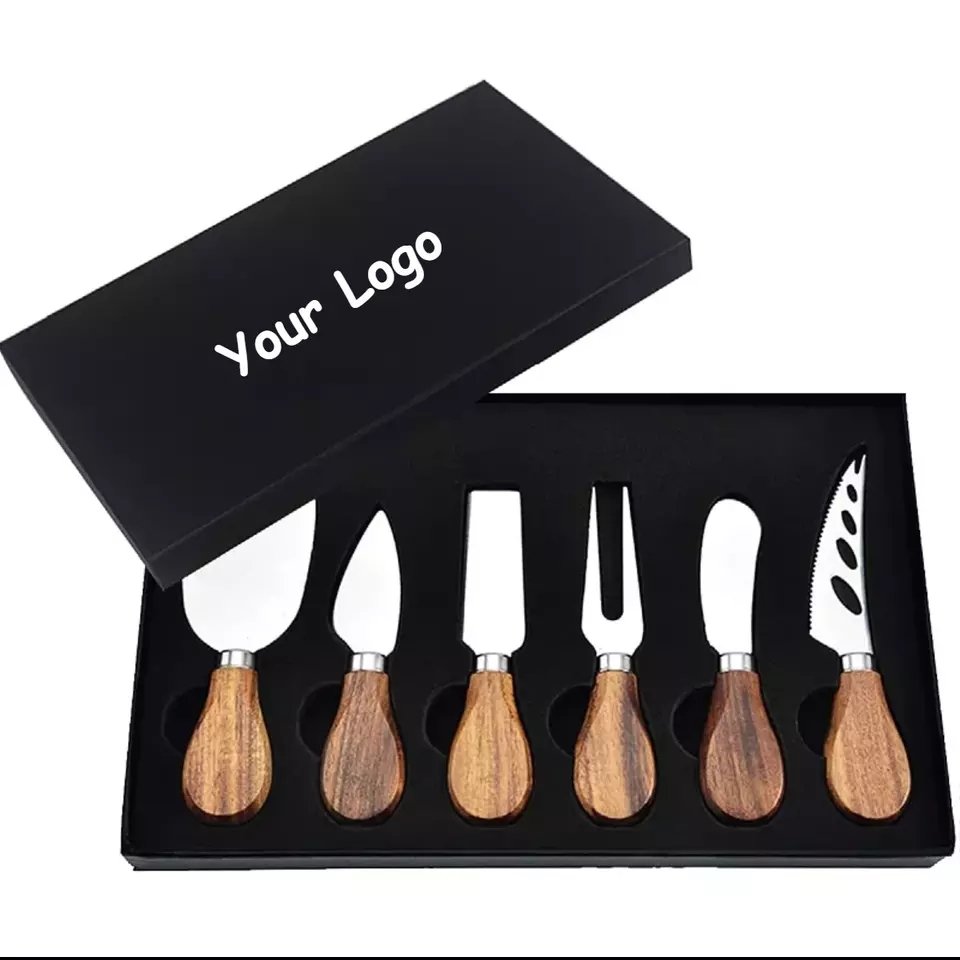When bulk orders go wrong, it’s not just money—it’s your brand, time, and trust that suffer.
To control quality and cost when buying outdoor cutlery in bulk, choose the right materials, verify supplier capabilities, inspect samples, and avoid hidden costs through clear contracts.
Buying outdoor cutlery in bulk can be tricky. One small mistake can cost thousands of dollars. But if you follow the right steps, you can avoid problems and even boost your profit margin. In this article, I’ll walk you through the strategies that have helped me and my clients find the sweet spot between quality and price.
Table of Contents
Why does bulk outdoor cutlery vary so much in quality and price?
If you’ve ever received a bulk order of outdoor cutlery that looked great in photos but felt like toys in your hands, you’re not alone.
Outdoor cutlery quality and pricing differ because of raw material grades, production methods, supplier reliability, and how much post-processing work is done.
To really control your costs, you need to understand why prices vary so much between suppliers offering “the same” product. Let’s break this down.

1. Material Grades Matter More Than You Think
Outdoor cutlery might look the same in photos, but the steel grade makes a huge difference. Here’s a quick breakdown:
| Steel Grade | Cost Impact | Rust Resistance | Durability | Typical Use |
|---|---|---|---|---|
| 430 | Low | Medium | Medium | Budget sets |
| 304 (18/8) | Medium | High | High | Mid-range |
| 316 | High | Very High | Very High | Marine use |
| 420 | Low | Low | High | Knives |
Suppliers often won’t tell you the full composition unless you ask. Always request an MTC (Mill Test Certificate) or third-party report.
2. Surface Finishing Affects Both Looks and Longevity
Polishing is more than aesthetics. A high-polish mirror finish costs more due to labor and machine time, but it protects against corrosion better than a simple matte finish.
| Finish Type | Cost Level | Appearance | Durability |
|---|---|---|---|
| Mirror-polished | High | Shiny, elegant | Excellent |
| Matte | Medium | Smooth, simple | Good |
| Sandblasted | Low | Rough, rugged | Fair |
If your brand targets the premium market, cutting corners on finish can hurt your reputation.
3. Tooling and Molds – The Cost Hidden in the Shadows
Many buyers overlook this. If your order needs a custom shape or logo, the mold cost can be significant. That’s why big suppliers amortize the mold cost over large volumes. But small factories may charge high upfront fees.
| Situation | Mold Fee | Risk |
|---|---|---|
| Custom design, new mold | High | Medium to high |
| Existing design, no changes | Low | Low |
| Reused mold from old order | Free | Depends on condition |
If your supplier controls their own mold shop, that’s a big plus. You’ll save time and money in revisions.
What’s the best way to vet outdoor cutlery suppliers?
There are thousands of suppliers online—but only a few that can really deliver consistent quality.
The best way to vet cutlery suppliers is to assess their production capabilities, check certifications, review client references, and visit their factory if possible.
Over the past decade, I’ve reviewed more than 300 suppliers. Here’s what I’ve learned.
1. Certifications That Actually Mean Something
Don’t just look for ISO or BSCI logos on websites. Request to see the actual certificates. Then check the date and issuing body.
| Certification | What It Means | Why It Matters |
|---|---|---|
| BSCI | Social compliance | Good for brand reputation |
| LFGB, FDA | Food safety | Required for EU/US markets |
| ISO 9001 | Quality systems | Better process consistency |
A factory without LFGB or FDA can still make decent cutlery, but you’ll risk customs clearance issues.

2. Factory Audit or Video Tour
If a supplier won’t do a video call or show you their production line, that’s a red flag. You want to see:
– Stamping machines
– Polishing stations
– Assembly and packaging
– QA/QC stations
I once skipped this step and paid for it. A batch of 10,000 spoons came back with inconsistent polish because the supplier outsourced finishing to a third party.
3. Communication Is A Quality Indicator
This sounds simple, but it’s powerful: fast, clear communication usually reflects internal processes. Ask questions like:
– How do you control polish consistency?
– Can you send a QA report from your last order?
– What’s your monthly production volume?
If they hesitate or give vague answers, walk away.
How can I keep costs low without sacrificing quality?
This is the question every smart buyer asks—but it’s also the hardest to answer.
To reduce costs without lowering quality, optimize order quantity, negotiate smartly, standardize designs, and reduce packaging complexity.
1. Economies of Scale – Know the MOQ Sweet Spot
Ordering more lowers unit cost. But too much inventory eats cash flow. Here’s what usually happens:
| Order Size | Unit Price | Notes |
|---|---|---|
| 5,000 sets | $2.50 | Small batch surcharge applies |
| 10,000 sets | $2.10 | Price drop begins here |
| 20,000 sets | $1.85 | Optimal balance |
I once helped a client cut $6,000 from their yearly purchase just by consolidating two orders into one.
2. Customization: The Enemy of Low Cost?
Custom logos, colors, or pouch designs all cost extra. Ask yourself: does this truly add value to the user?
| Custom Element | Extra Cost Impact | My Advice |
|---|---|---|
| Laser Logo | Low | Worth it |
| Molded Handle | High | Avoid unless unique |
| Printed Box | Medium | Simplify design to 1-2 colors |

3. Packaging is Where Money Hides
Outdoor cutlery usually comes in pouches, tins, or cardboard boxes. By switching from custom tins to printed kraft pouches, one of my Turkish clients saved over $0.40 per set—without hurting the user experience.
Why do samples sometimes differ from mass production?
You received the perfect sample. But the final order? Not even close.
Samples and mass orders differ due to changes in process, material sourcing, and lack of production oversight.
1. Understand Sample Types
Not all samples are created equal. Clarify what you’re getting.
| Sample Type | Purpose | Risk |
|---|---|---|
| Stock sample | Shows style only | Low |
| Pre-production sample | Shows your spec | Medium |
| Golden sample | Final QA reference | Low if documented |
Always document your approval in writing. And get a sealed golden sample with your signature.
2. Ask About Batch Size Differences
Factories often do manual polishing for samples, then machine polishing for large orders. This causes slight differences in texture or gloss.
If your brand requires consistency, ask for a polishing test run during peak production.
3. Use Third-party QC Wisely
Hire a local QA firm in China to do random checks. A good inspector checks:
– Weight and dimensions
– Surface finish
– Packaging
– Drop test (for pouches)
It’s not expensive—usually $180 to $280 per visit—and can save thousands in refunds or reworks.
What common mistakes should I avoid when buying outdoor cutlery in bulk?
Mistakes in bulk buying hurt not just money, but also your reputation. I’ve made some. You can skip them.
Avoid rushing decisions, skipping inspections, ignoring material specs, and forgetting to plan for after-sales issues.
1. Relying on Just Photos
Photos hide defects. Always ask for videos or real-time walkthroughs.
2. Not Having a Contract in Place
Even if you trust the supplier, get everything in writing:
– Delivery timelines
– Packaging method
– Material specs
– Penalties for late or defective delivery
Use a bilingual contract (English and Chinese) if possible.
3. Ignoring Shipping Terms
FOB, EXW, CIF—these aren’t just acronyms. They define who pays for what, and when. Once, I assumed CIF meant door delivery. It didn’t. We had to pay port clearance fees that weren’t budgeted.
| Term | What It Covers | Who Pays for Freight? |
|---|---|---|
| EXW | Factory pickup | You |
| FOB | To port | You |
| CIF | To destination port | Supplier |

How can material choices impact both quality and price?
Choosing the wrong material can destroy your cutlery brand. It can rust, bend, or feel cheap.
Material selection affects not only the durability of outdoor cutlery but also the production cost and user experience.
Every supplier will tell you, “We use stainless steel.” But not all stainless steels are the same.
1. Grades of Stainless Steel: 18/10 vs 18/0 vs 13/0
The number tells you the nickel and chromium content, which directly affects corrosion resistance, shine, and price.
| Grade | Chromium | Nickel | Rust Resistance | Cost | Common Use |
|---|---|---|---|---|---|
| 18/10 | 18% | 10% | High | $$$ | Premium flatware |
| 18/0 | 18% | 0% | Medium | $$ | Budget cutlery |
| 13/0 | 13% | 0% | Low | $ | Steak knives |
Many clients think 18/0 is “good enough” for outdoor use. In dry regions, maybe. But in coastal or humid areas? You’ll get rust spots in months.

2. The Hidden Cost of Bad Materials
If you try to save by choosing lower-grade steel, here’s what you risk:
– Higher return rate from customers
– Bad reviews
– More frequent replacements
– Damaged brand reputation
These issues often cost more than you save upfront.
3. How to Choose the Right Material for Outdoor Use
When selecting materials, consider:
| Factor | Recommended Action |
|---|---|
| Exposure to elements | Use 18/10 or 304 grade |
| Budget-focused markets | Use 18/0 but with PVD or protective coating |
| Disposable use cases | Consider aluminum or plastic blends |
| High-end outdoor dining | Invest in titanium-coated 18/10 |
I once had a client from Italy who wanted something rust-proof but cheap. We suggested 18/0 with PVD coating instead of raw 18/10. He saved 15% but still offered a rust-free experience. It’s about choosing smart—not cheap.
What role does factory audit play in risk control?
A polished catalog doesn’t tell you the whole story. The factory behind it might be disorganized or even outsource your order.
Factory audits help identify production risks early by verifying the supplier’s real capabilities and quality systems.
Some buyers skip factory audits to save time. But the hidden risks are huge.
1. What You See vs. What You Get
Catalog photos and samples can be misleading. Here’s what audits actually reveal:
| Audit Scope | Why It Matters |
|---|---|
| Production capacity | Ensures they can handle your volume |
| Equipment status | Shows if machines are modern or outdated |
| QC process | Determines how consistent their output is |
| Worker skills | Impacts production stability and efficiency |
| Subcontracting | Helps identify hidden outsourcing risks |
In one audit I conducted, we discovered a supplier had no polishing department—they outsourced it to another town. That would have delayed delivery and reduced quality control.
2. Types of Factory Audits
Different audits reveal different types of risks. Here’s a comparison:
| Audit Type | Purpose | Typical Timing |
|---|---|---|
| Initial Capability Audit | Verify basic factory info | Before placing first order |
| Process Audit | Check specific production flow | During product development |
| Social Compliance Audit | Check labor/environmental practices | For brand alignment |
| Pre-shipment Audit | Verify order readiness | Before final payment |
If you only do one audit, start with an initial capability check. It costs little but reveals a lot.
3. Red Flags to Watch For
Here are some audit findings that should make you cautious:
– No written QC procedures
– Workers doing multiple steps manually
– No temperature/humidity control (affects stainless steel)
– Finished goods stored near raw material (risk of contamination)
A factory that can’t organize its space probably can’t organize your order either.
4. When to Skip an Audit (Rare, but Possible)
If you’ve worked with the supplier for years and have stable results, maybe you don’t need one every time.
But for new suppliers, especially from trade shows or Alibaba, always do at least a desktop audit (video call, certifications, production videos).
In my own business, I require a physical audit before any bulk order over $10,000. It’s saved me more money than it’s cost.





